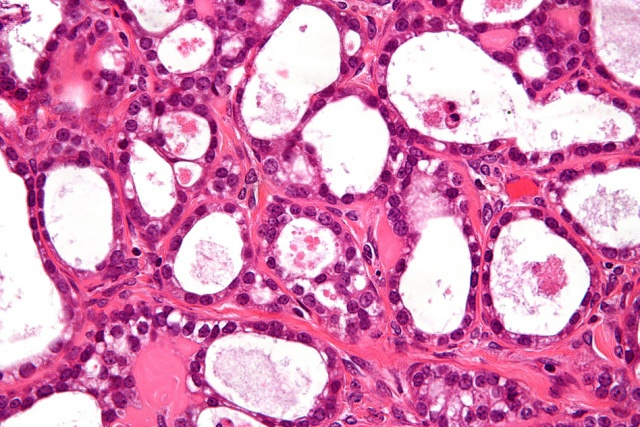
A high-magnification micrograph of an ovarian clear cell carcinoma. The images show, focally, the characteristic clear cells with prominent nucleoli and the typical hyaline globules. A high-magnification micrograph of an ovarian clear cell carcinoma. The images show, focally, the characteristic clear cells with prominent nucleoli and the typical hyaline globules.
Image: Nephron/CC BY-SA 3.0 | MIT News
A major challenge in fighting cancer is catching it early, when therapies tend to be most effective and patient outcomes most improved. In a recent Nature Biomedical Engineering publication, the Bhatia Lab shows off the capabilities of the new and improved version of their non-invasive urinary diagnostic, which incorporates new design strategies for tumor-specific signal generation and better penetration into tumors.
Current standard clinical detection tools can only reveal tumors about a centimeter in diameter, a size estimated to reflect up to ten years' growth from tumor initiation. The Bhatia group's new nanosensor is even more sensitive than the original: it is >10 times more sensitive and able to detect tumors less than 5 mm in diameter. Moreover, the group is hopeful that the key biomarker used for targeting their nanosensors may prove useful as an indicator for aggressive cancers, in addition to tumor growth, given its role in tumor progression. The Bhatia Lab's original sensors were supported in part by the Koch Institute Frontier Research Program; this latest work was supported in part by the Marble Center for Cancer Nanomedicine and the Ludwig Center for Molecular Oncology. Read more and learn about the more personal story behind this project.